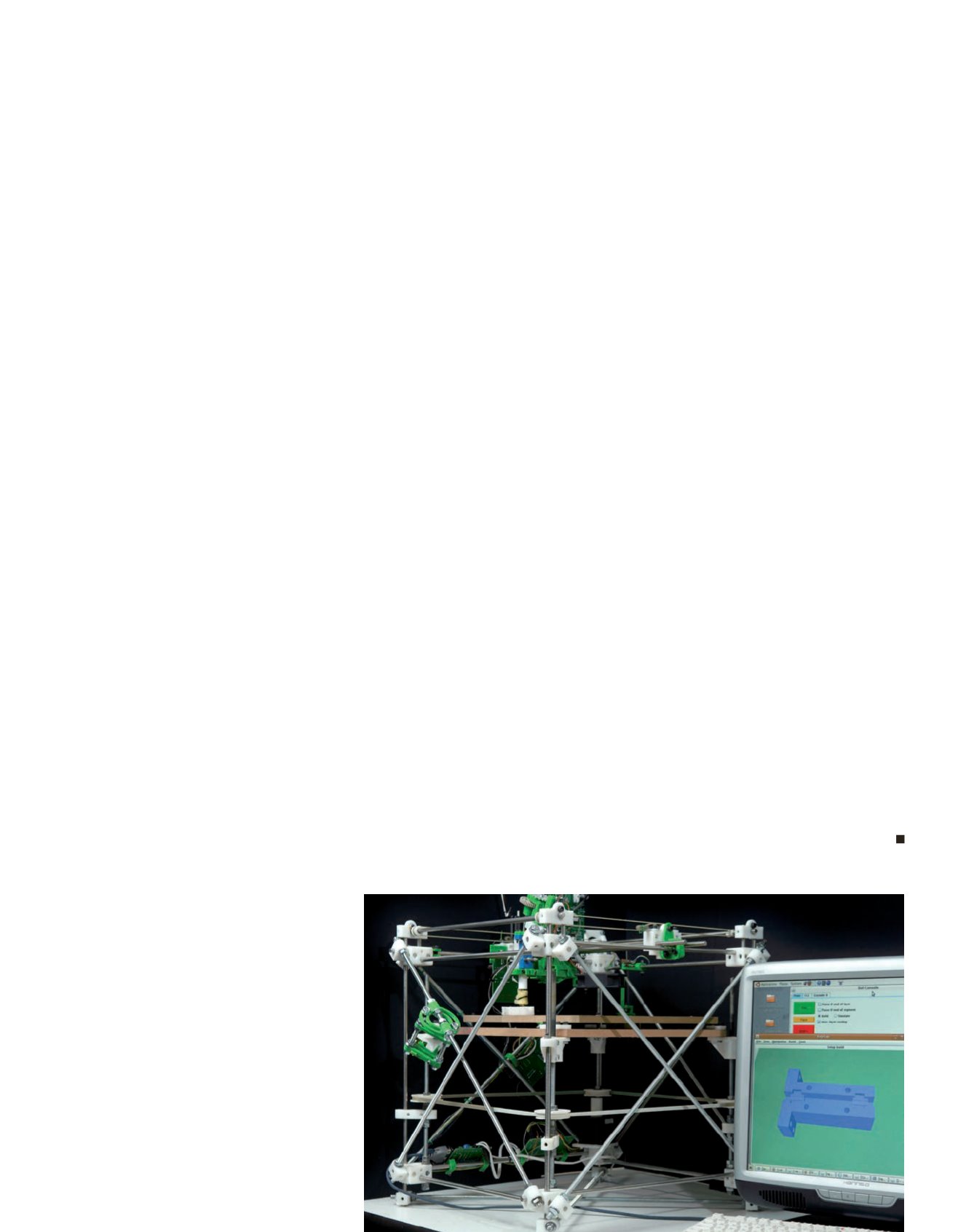
27
Officelayout 156
gennaio-marzo 2014
Opportunities and challenges of 3D printing
Created as a tool for rapid prototyping, 3D printing has emerged as a production technique for the construction
of finished products, with remarkable advantages for creativity and the possibility of inventing and experimenting
with very low costs
3D printing is a process of production of three-
dimensional objects, that starting with a digital
model permits the creation of complete objects or
parts. It is a technique of additive production
that constructs objects by adding material
through a process of sequential layering, rather
than removing portions of material as happens
with traditional machine tools.
The advantages are the reduction of the
quantity of material used in fabrication
processes, and the possibility of creating
objects that would be hard to make with
traditional techniques.
The materials used are plastics, metals,
ceramics, clay and sand, glass, wood paste,
paper, chocolate and even living cells (bio-
printing). These raw materials are used by the
printers in the form of liquids, powders,
filaments or sheets.
The finished products offer a range of benefits,
because they can be lighter while remaining
sturdy, can have forms that could not be made
with other production processes, can be
multicolored without the need for successive
painting operations, and can lead to products
manufactured in a single phase, rather than the
assembly of multiple parts. Since each object is
individually produced, 3D printing is an ideal
solution for mass customization and the
creation of personalized objects.
Until 2010, due to lack of availability of
materials with suitable characteristics, the
objects produced by 3D printers could not be
made as finished products, because of their
inadequate physical properties (strength, heat
resistance, surface finish, color, etc).
Over the last three years the printers and
materials have made giant steps, and the costs
of purchasing and use have been drastically
reduced, making this system feasible on a
purely economic level, for the production of
certain types of objects in specific markets
using additive technologies.
Many companies have already adopted this
technology as part of the design process,
gaining a series of advantages:
- more innovation (the possibility of printing
prototypes, perfecting designs and repeating the
cycle in just a few hours);
- better communication (a realistic full-color 3D
model has greater informative content than a
computer image);
- shorter time-to-market (the 3D printing of
prototypes to order slims design and
production cycles);
- lower development costs (reduction of costs of
prototyping, early identification of design
errors, reduction of movement to and from
production plants);
- acquisition of new clients (the possibility of
demonstrating realistic 3D models to potential
clients, sponsors and stakeholders).
3D printing is therefore emerging as an
innovation that could radically change our
approach to design and, obviously, to the
market as well.
This new technological frontier will be
analyzed by Officelayout in a series of
articles to explore the implications of 3D
printing for design and architecture, in
terms of projects and prototypes, and the
possibility of producing functioning objects.
Applications and markets
3D printing offers an advantage from the
viewpoint of creativity, because it grants the
possibility of inventing and experimenting at
very low costs. To reproduce or create any object
becomes economically advantageous, above all
if the production is limited, as in the case of
the production of prototypes and as support for
the design of innovative or particular pieces,
and in cases where more efficient service needs
to be offered to customers.
In general, it makes sense to 3D print an
object if it does not exist or is no longer
available on the market, namely when the cost
of acquisition is much higher than that of
printing, or when obtaining the object would
require too much time.
Obviously the advantages increase if the objects
produced are unique, like spare parts for vintage
cars or costly machinery and works of art.
The market opportunities are intriguing in the
field of hobbies and crafts (model making, toys,
accessories, jewelry, footwear, fashion,
ceramics, sculpture, restoration parts,
preparation of pastries), for the making of
unique or personalized objects that can be
directly produced in FabLabs, specialized
workshops or service centers.
In the field of architecture and design, 3D
printers are used for the production of urban
planning and architectural mock-ups, models and
prototypes of furniture and objects, using
different materials like steel, wood paste, plastic,
nylon, glass and ceramics. There are also
experimental projects to “print” entire sections of
prefabricated structures and buildings.
In the industrial field, the most promising
markets are the auto and aerospace industries,
precision mechanics, prostheses and other health
care devices, which require a high level of
customization and complexity. With its ability to
shorten development time for new products and
prototyping, 3D printing significantly reduces the
time-to-market of products.


